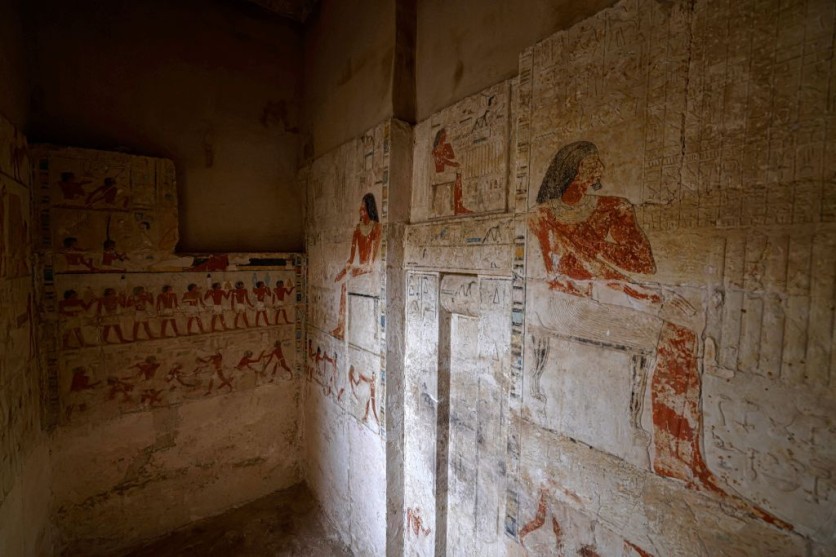Ancient Egyptian funerary paintings have long been admired for their formal and structured nature, but a recent study conducted by an international team of scientists revealed new insights into the artistic techniques and practices employed by ancient Egyptian painters.
Led by researchers from the CNRS, Sorbonne University, and Université Grenoble Alpes, the team utilized advanced scientific methods to uncover hidden details in two ancient funerary paintings dating back to around 1,400 and 1,200 BCE.
Their findings shed light on the artistic freedom exercised by these ancient painters. The two paintings were found in tomb chapels within the Theban Necropolis in Egypt.

Ancient Funerary Paintings
The research team noted that ancient Egyptian civilization did not have a specific word for "art," and their creative expression was often seen as rigid and formal.
However, the team's research unveiled previously unnoticed modifications and touch-ups made by the painters during the production of these funerary paintings. Using portable tools for nondestructive chemical analysis and imaging, the scientists discovered subtle changes that were invisible to the naked eye.
In one example, the team observed significant reworking of the headdress, necklace, and scepter in an image of Ramses II. Similarly, in a scene from Menna's tomb, they noticed alterations to the position and color of an arm.
These modifications indicate the personal touches added by the painters, also known as "draughtsmen-scribes," either at the request of the patrons or due to their evolving artistic vision.
To uncover these hidden details, the scientists employed chemical analysis, 3D digital reconstructions using photogrammetry and macro photography, and advanced imaging techniques.
Over time, the original colors of the paintings faded and changed due to various factors. By analyzing the chemical composition of the pigments used, the researchers aim to restore the original hues and provide a more accurate representation of these ancient masterpieces.
Read Also : [LOOK] Warsaw Mummy Project Reveals Portrait of Egyptian 'Mysterious Lady' Through Facial Reconstruction
Challenging the Notion for Pharaonic Art
This research challenges the notion that pharaonic art was static and unchanging. However, it suggests a more dynamic and complex process of artistic creation.
The scientists involved in the study plan to extend their investigations to other paintings, searching for further evidence of the craftsmanship and individual artistic identities of ancient Egyptian draughtsmen-scribes.
The study's findings provide valuable insights into ancient Egypt's artistic techniques and practices, contributing to a deeper understanding of their culture and creative expression.
By uncovering hidden details and allowing for the restoration of original colors, this research breathes new life into these ancient funerary paintings, showcasing the skill and creativity of the ancient Egyptian artists. The findings of the team were published in PLoS ONE.
Related Article : Archaeologists Find a "Miracle" Ancient Tunnel Where Cleopatra May Have Been Buried

ⓒ 2025 TECHTIMES.com All rights reserved. Do not reproduce without permission.




